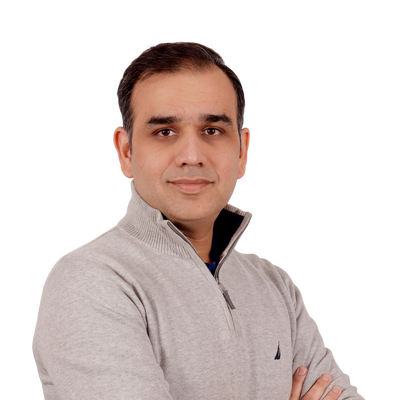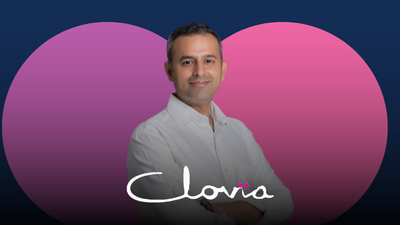It’s hard to miss out on a content piece by The Whole Truth Foods.
They’re fun, informative, educational, and very rarely boring.
Shashank Mehta, founder and CEO of The Whole Truth Foods, is on a mission to build India’s most loved D2C brand, backed by Matrix Partners India, Peak XV Partners, and Sauce VC. Known for his candor and clarity, Shashank generously told us about the mental models with which he and The Whole Truth team look at content, editorial, and everything in between.
You should read this article if you are interested in:
- Building an opinionated D2C brand that walks the talk
- Playing on your core brand and communication strengths
- Finding the balance between brand-building and performance marketing
- Building an in-house content studio
Grams To Instagram
Interestingly, The Whole Truth started from founder Shashank Mehta’s blog, Fitshit.
After launching The Whole Truth, Shashank did what all D2C brands do - hit Instagram, where they found early success and then learned a tough lesson in the world of big algorithms.
Shashank: “The genesis of Truth Be Told - our long form health newsletter, actually lies in Instagram. The Whole Truth was one of the fastest to get to 100K followers in the country . We got there in seven/ eight months. So Instagram was the place where our community was first built. But then as Instagram moved from posts to reels, we kind of started losing our way. Honestly, we never really understood how do we continue to do what we do, which is deeply educate our community, using reels. So about a year ago, we went off Instagram.”
But it wasn't just a shift in the marketing channel. Shashank had a deeper realization about content - do something unique to you.
Shashank: “I wouldn't say we pivoted from Instagram. I think we failed at doing what that platform wanted us to do. We said till the time we figure this out, let's just go back to our strength. While we were spending all day and night making reels and failing at it, what we were not doing was leaning in on our strength - long-form deep educational content. So we went back to that, and that's how Truth Be Told was born.”
Truth Be Told, born from Shashank's deep-rooted desire to pursue health journalism, arrived at a time when the incentives for journalists are increasingly getting skewed.
Shashank: “We introspected on what is meant by health journalism and why no one else in the country is doing it the way it should be done. Our deepest insight is that health doesn't need a ‘breaking news’ approach. New things are not happening in health every day. Your body and my body are 10,000 years old. Telling people the fundamentals about our bodies itself is timeless knowledge.”
How Many Truths to Success?
By switching back to long-form health journalism, Shashank doubled down on his conviction of long-form writing. ‘Likes’ and ‘Follows’ aren’t much of a deal here. So, which metrics did he prioritize?
Shashank: “In long-form writing, engagement metrics are very clear - time spent on the page, the depth to which you scrolled, average read time, and the average number of words read.”
If you didn’t notice already, Shashank wasn’t tracking how many protein bars were flying off the shelves, thanks to the articles on TBT.
Shashank: “There is zero sales target for Media Labs or anyone running Truth Be Told. We don't even talk to them about sales. Their target is very high journalistic and editorial standards, and what engagement are they driving. What is the open rate of our newsletter? What is the time spent on our newsletter? What is the NPS of our product? We measure success like any other great journalistic outlet. Hopefully over time if we do this well, it'll lead to brand equity where people will trust our brand more because we are investing in educating them rather than trying to sell them things. They’ll see that we've been doing this as a service to the community for a long and thus they can trust them. It's our way of earning people's trust.”
It’s important to note that while Truth Be Told was doing long-form health journalism, Media Labs is the internal team producing content for them.
Neither of the two had any business numbers to attain.
But numbers were only one part of the picture. They also did something unique: a qualitative survey.
Shashank: “We've done two surveys where Samarth, the editor of the newsletter,wrote to all readers asking for feedback. And it was just an open ended feedback on if they are getting useful stories, do they like the kind of narratives they are getting, and more broadly, if any stories made a difference. The response was unbelievable. We got 190 long and deeply detailed email responses.”
In fact, such was the thunderous response of the qualitative survey that it spawned an article of its own.
Shashank neatly summarizes his efforts using the two-company analogy, which also means that doing serious content is not for the faint of heart.
Shashank: “We’re actually building two companies: A product company and a content company. On the content side, there are no business goals, but we hold ourselves to high journalistic standards. One of the ways in which a good journalistic outlet would gauge engagement is if their content is leading to the mind shift they wanted.”
Branding Convictions and Principles
For early-stage startups, key branding decisions stem from the deep-rooted beliefs of their founders, shaped by their experiences and philosophies. Shashank shares this sentiment.
Shashank: “The beauty of building The Whole Truth brand is that I can say what I believe in. And most importantly, what I say to my consumers, what I say to you, what I say to my investors, what I say to my employees is exactly the same thing. From day minus one.”
Shashank believes that many D2C founders and marketers don’t fully understand how marketing has evolved over the years. The days when the audience would patiently sit around consuming on-screen brand promotions (for lack of a better option) are long gone.
Shashank: “The only brand communication that reaches us is the stuff that we actually seek out. Otherwise, we don't even allow brands to reach us. The era of push marketing is dying very fast. As a consumer, unless I want to be reached by a brand, to consume what they are saying, there's no chance they’ll be able to talk to me. So, there is no option but to do great content and the only way to do great content is to be doing things no one else can do better than you, because there's so much clutter in the world.”
Along with how and where to say things, Shashank emphasized what to say, which forms the cornerstone of all their editorial efforts.
Shashank: “No one focuses on what to say; do you even have something worth saying? There is so much noise and clutter on social media. Wveryone who's anyone is trying to say something. Consumers only listen to you if you're educating or entertaining, ideally both.”
When you focus on educating customers and not only on selling the product, you barely move the needle at first. But the patience is worth it.
Shashank: “While the results of great content will not show up in the short term but in the long term you will have lower Customer Acquisition Costs (CACs) and you will have higher performance marketing Return on Ad Spend (ROAS) than anyone else because the consumer has already bought into your philosophy. And then you hit them with a piece of advertising that converted them into a buyer.”
When asked about the brand strategy he would suggest to young D2C founders, he says that ‘strategy’ is an incorrect starting spot.
Shashank: “I think brand-building can only start with mission and faith. It cannot start with the strategy because if you start with strategy, you’ll first want to answer questions like how many resources will be allocated, how will we judge whether it's doing well or not, etc. Nothing unique ever takes off if you try to attach too much strategic intent to it because then your incentives are not aligned with the reader's incentive.”
Building the Team
Any content is only as good as the people who create it.
So, how does Shashank assemble his team, and what’s the fabric of the Truth Be Told team?
Shashank: “It's not run by a large team. We have one editor and one full-time dedicated resource within the company and two part-time resources who run all of this. We don’t have writers on rolls because our writers come from our community.”
These writers include Mukesh Bansal, who founded Myntra and Cure Fit, and Sweta Shivakumar, a renowned food researcher and columnist at the Hindustan Times. They contribute to TBT every once in a while, as they deeply relate to the cause of the publication. All of these writers are, in fact, readers of Truth Be Told and want to contribute to the publication. This is the best hack to find great writers - Create great content, and those who read it will want to write for you!
Shashank: “These are highly successful people, and they've learned about food and fitness. They have experience and expertise. We pay them a nominal fee of Rs 10,000 per piece. So they're not doing this for money. They're doing it because they believe in the mission. They will not write anything that they don’t believe in. If I ever try to go and influence them, they will leave.”
Shashank makes it a point to stay away from the writing process, as he doesn’t want to influence the editorial decision-making.
Shashank: “Over time, we’ve learned who are the right kind of people to work with, how to engage them and what to make clear upfront. We now have 18-20 folks who are like our author panel who write for us every two months. We are able to steer editorial strategy, not with the new guys that we keep bringing on every month, but with the regulars who are right for us.”
Shashank has built a solid internal team. And a smart network of external writers.
But what if there’s ever pushback from investors/board?
Shashank: “If I ever get pressure from my board about why the hell am I spending money on this when it's not going to lead to sales, I'd rather shut it down than lose the integrity of what we’ve built. We built the platform to bring everyone together and we have distribution because we are not trying to sell. So from day one, we had some audience who were ready to receive whatever we were saying, but that's all. We are just the platform that brings these people together and we have enough checks to ensure that the incentive doesn't go astray.”
How to Scale Passion?
Shashank: “As the brand grows, you want to do bigger things and put in more checks/balances. But you know, in trying to standardize processes, you start losing the soul of it.”
The Whole Truth is at an interesting juncture. While they are growing at a rapid clip, they want to stay authentic. But how do you maintain authenticity at scale? This is something that even Shashank is figuring out along the way.
Shashank: “My investors can see that everyone's talking about the brand. And it's showing in sales. They know that there is a magic sauce, but they don't know what the magic sauce is. According to me, the magic sauce is that we really believe in what we're saying, and we are saying it with conviction. We haven't faced a time yet where business results are not happening.”
Ultimately, this belief is what has fuelled him from Day Minus one.
Shashank: “It's difficult to explain how passionate I am about this. This is what gives me the most happiness. I want to do a lot more of this and I'm not getting the time. As a single founder, there are many things that I need to make time for. I have a great team but still there is always downward pressure on the amount of time that one can spend on this. And honestly, the other big problem is how you scale this. My journey, my passion.”
Being a founder is never easy. While the number of tasks has only increased, Shashank yearns for a time when he can spend more of his mind space on content.
Quite interestingly, though he has managed to outsource and delegate other parts of his business, including finance and ops, content is true to his personality and, to a large extent, The Whole Truth’s origin story, too.
“This is one thing that only I can do the way I can.”
Sometimes, it’s worth doing things that don’t scale.
And that’s the whole truth.










